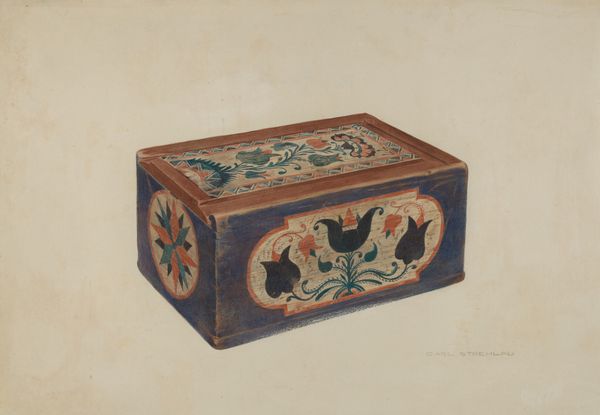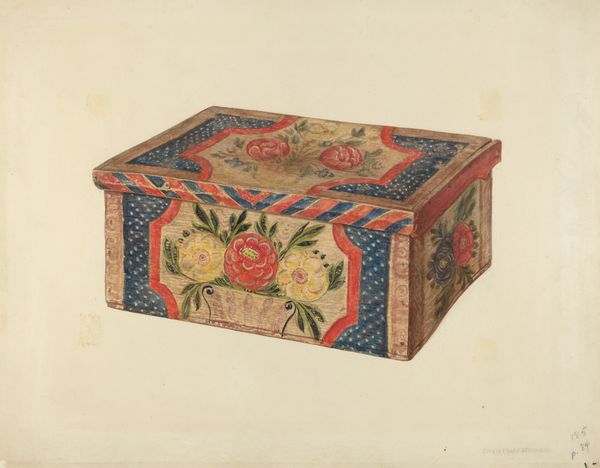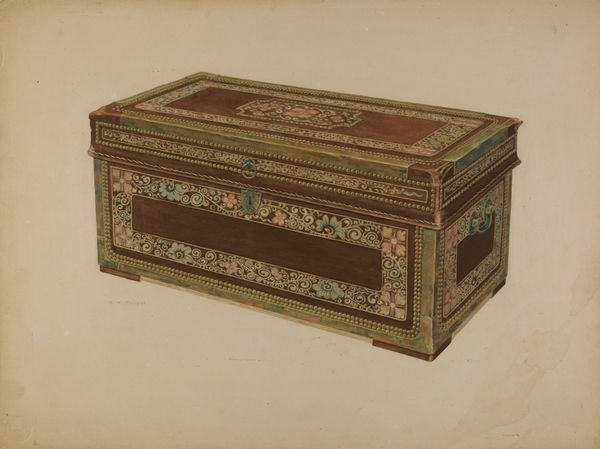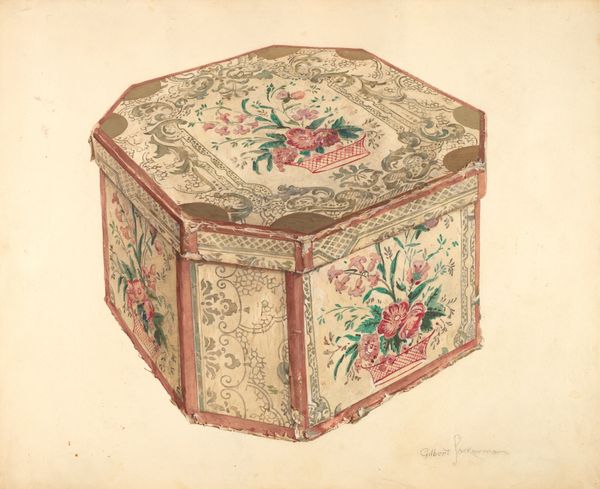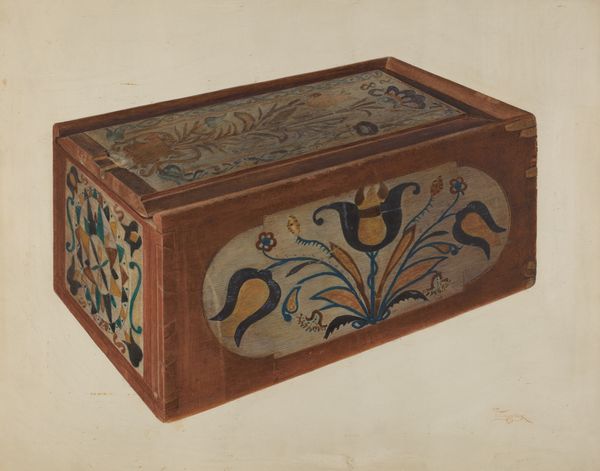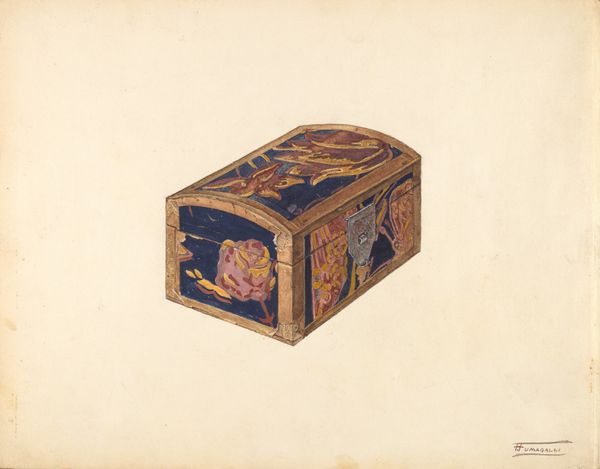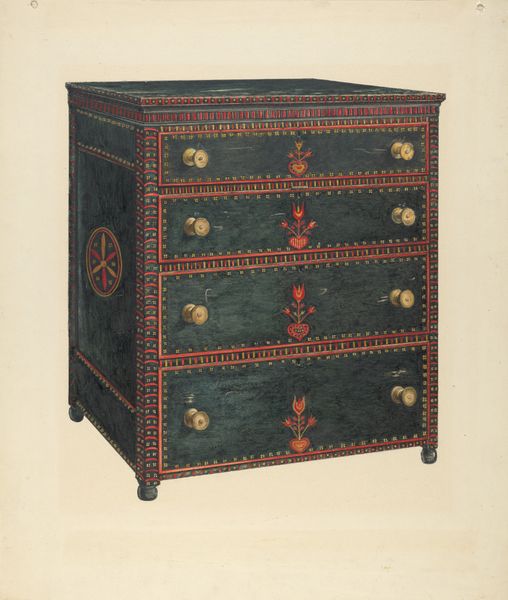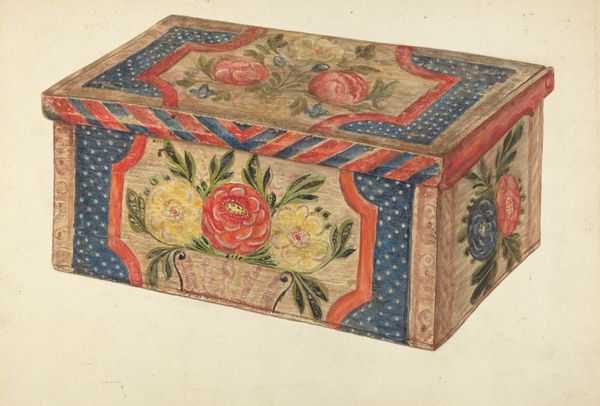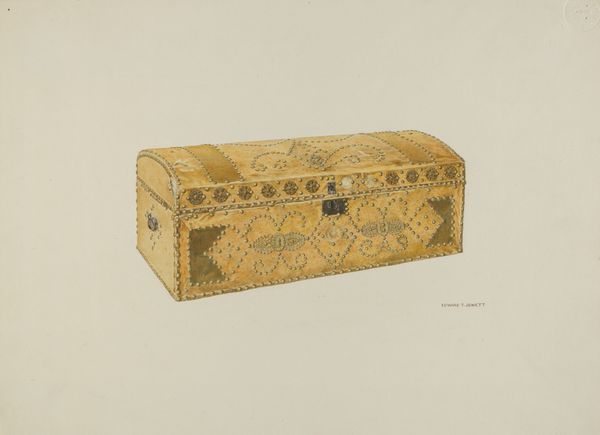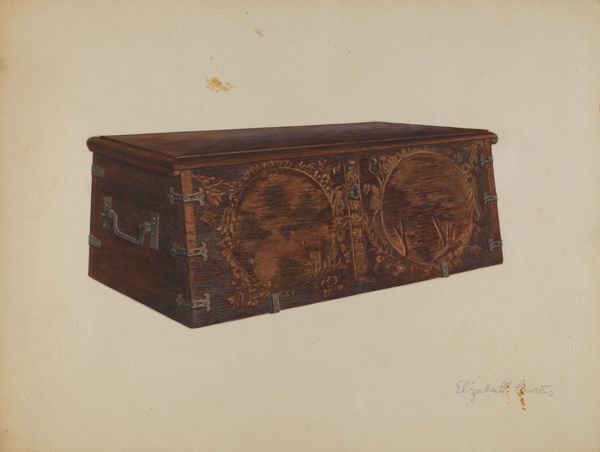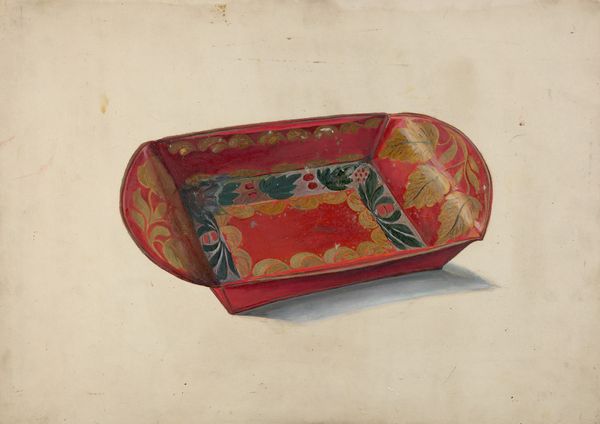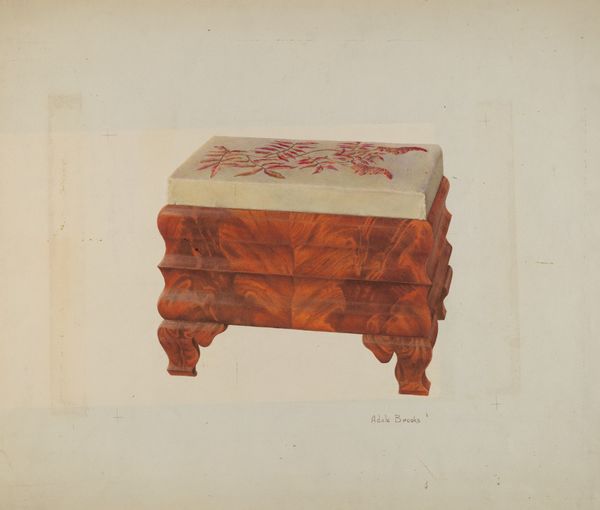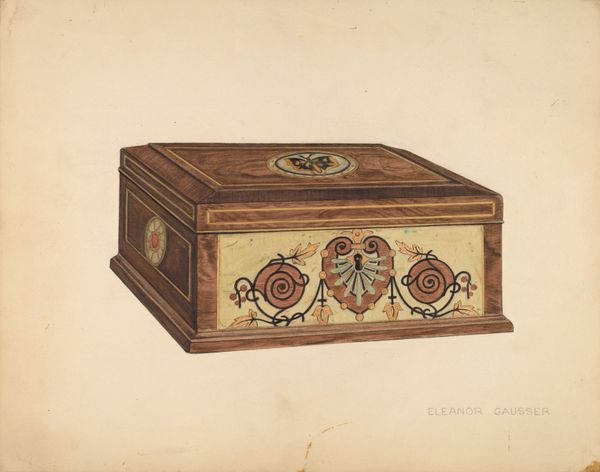
drawing, coloured-pencil, watercolor
#
drawing
#
coloured-pencil
#
watercolor
#
coloured pencil
#
geometric
Dimensions: overall: 35.8 x 51.2 cm (14 1/8 x 20 3/16 in.)
Copyright: National Gallery of Art: CC0 1.0
Curator: Here we have Ethelbert Brown's "Pa. German Box," likely rendered between 1935 and 1942 using watercolor and colored pencils. The depiction focuses on a small decorative box, exhibiting what appears to be traditional Pennsylvania German folk art motifs. Editor: My first thought is…wistful. It's a box, right, something meant to hold treasures. But this one feels almost ghost-like, rendered with such soft edges. Like a memory of a box, more than the box itself. It's lovely, but also melancholy, don't you think? Curator: Indeed. Notice how Brown's technique of employing watercolor and colored pencils lends itself to a softened, almost ethereal quality, which certainly affects the perceived texture. Furthermore, the composition emphasizes geometric arrangements married with the organic swirls of the folk art, creating a compelling visual dialogue. Editor: I love how the red flowers on top, they’re almost like tiny explosions against the cooler greens and blues. It's as if Brown wanted to trap little bursts of joy inside the memory. Boxes can do that, right? Hold on to moments. Maybe the melancholy is just the longing for what's inside…or what used to be. Curator: One might also consider how the medium itself—watercolor on paper— contributes to this perceived impermanence, quite different from the solid wood construction the subject suggests. There is a visual tension between the subject and how it's realized. Editor: And isn't that the beauty of it? It's not just about seeing a box, it's about the emotions and stories we bring to it. Brown, maybe he knew the best boxes are filled with things unseen, felt. Like love, like loss. It’s far beyond the function of keeping safe tangible belongings, wouldn’t you agree? Curator: I see your point. Perhaps Brown intended to capture not merely the box's physical attributes, but its resonance as a vessel of cultural heritage, filtered through personal memory and emotion. Fascinating interplay indeed. Editor: Absolutely. It started as a simple rendering of a Pa. German box but it became so much more as a visual reflection of personal storytelling. The most ordinary thing could mean extraordinary sentiments. Thanks for the insight.
Comments
No comments
Be the first to comment and join the conversation on the ultimate creative platform.
